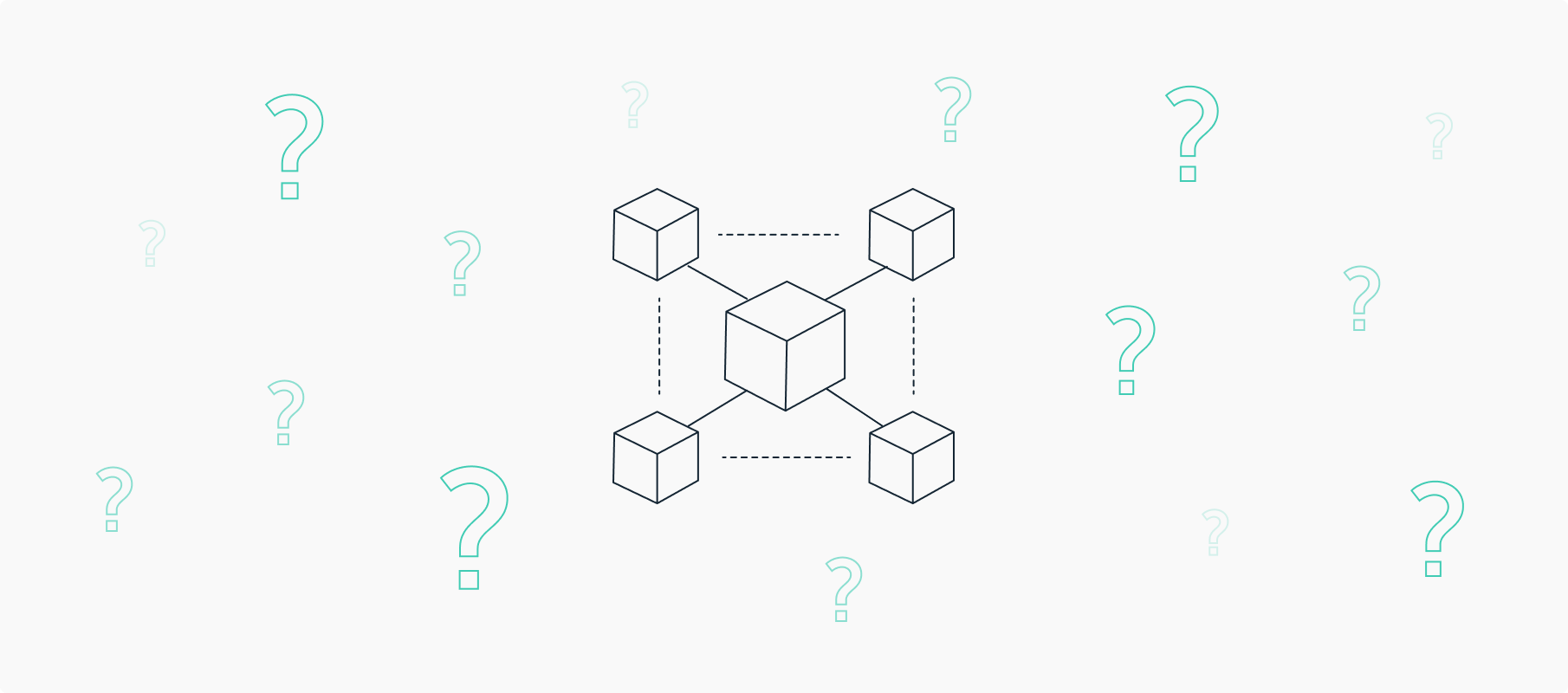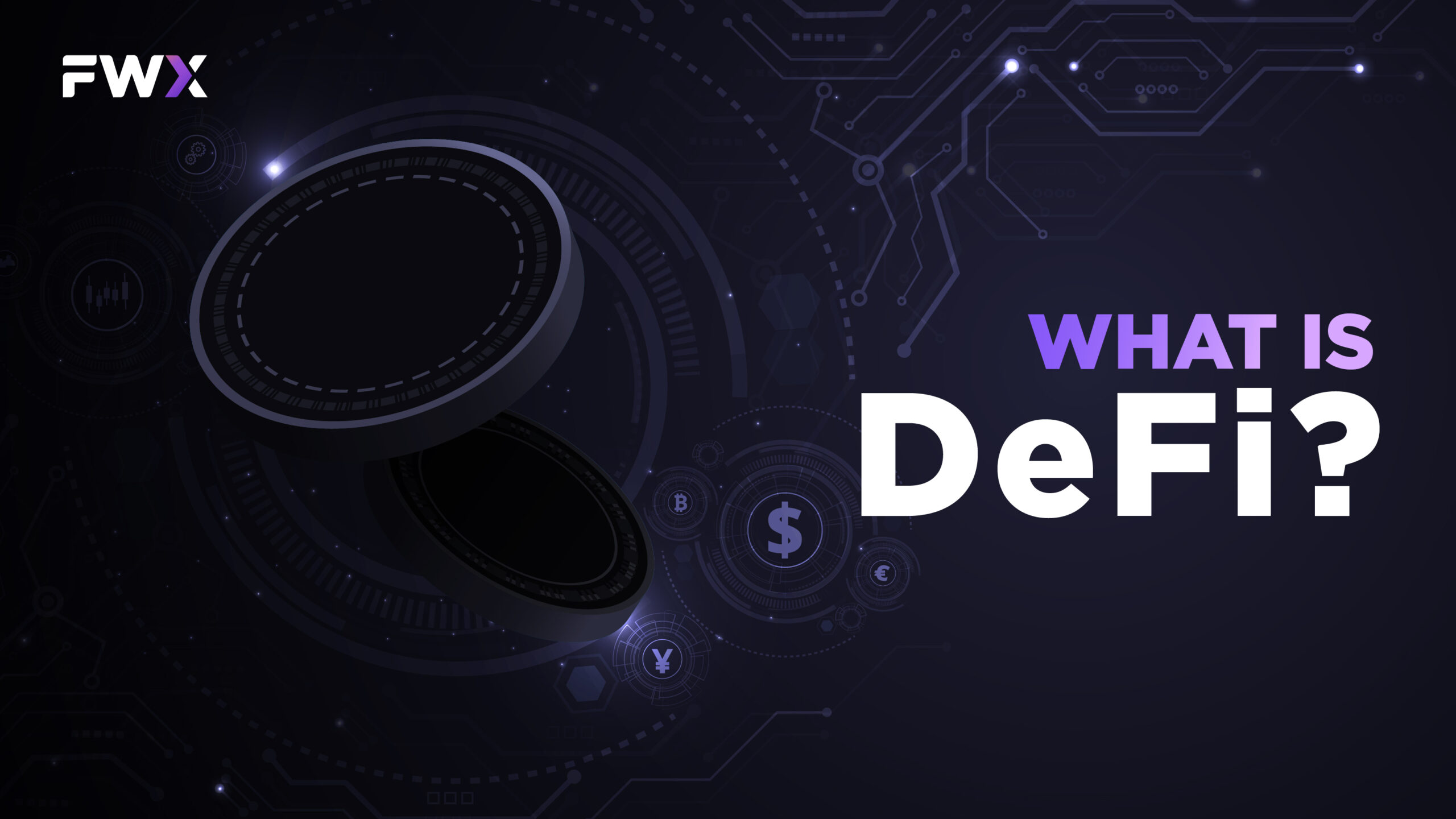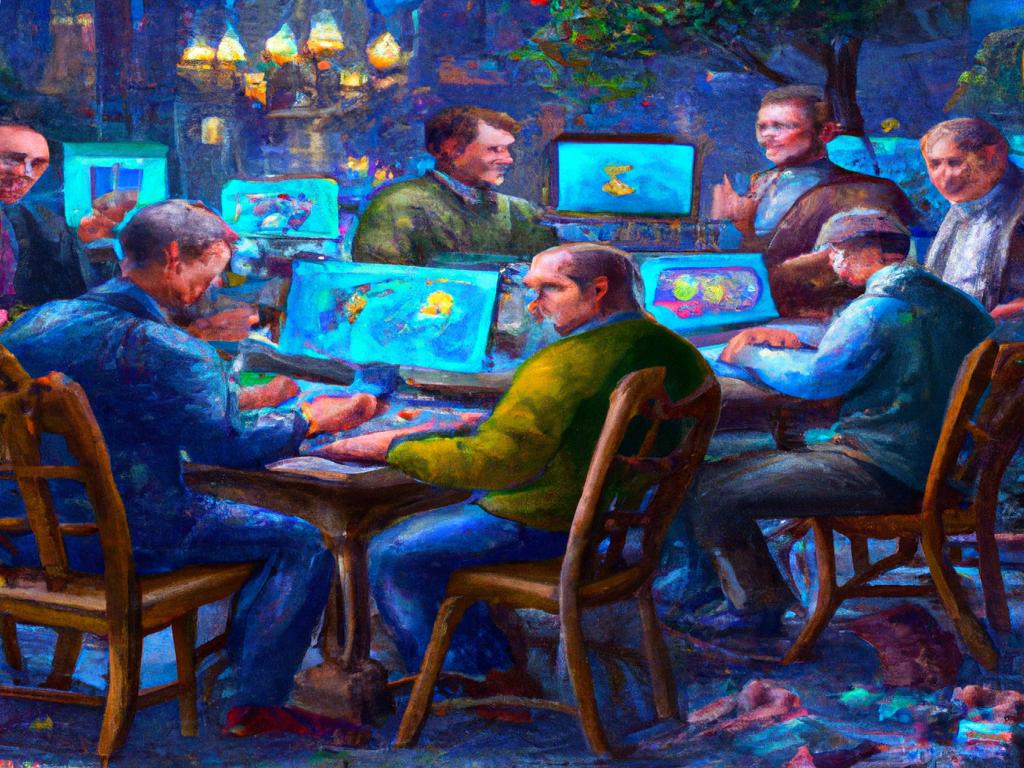The rise of decentralized finance (DeFi) has paved the way for innovative solutions in the blockchain industry. Thanks to the dedicated efforts of crypto developers, DeFi has become more accessible and user-friendly than ever before. One area where developers have made a significant impact is in the creation of decentralized applications or dApps.
By leveraging smart contracts and blockchain technology, developers have built dApps that allow users to swap tokens, provide liquidity, and participate in various DeFi protocols seamlessly. These dApps eliminate the need for intermediaries and provide users with full control over their funds, enhancing the overall security and trustworthiness of the ecosystem.
Developers have also contributed to the frontend development of DeFi projects, creating user-friendly interfaces and intuitive designs that make it easier for users to navigate and interact with DeFi applications. This has made DeFi more accessible to a wider audience, helping to drive adoption and increase the overall appeal of decentralized finance.
What is Decentralized Finance (DeFi)?

Decentralized Finance, also known as DeFi, is a new and exciting development in the world of finance that aims to build a decentralized financial system using blockchain technology. DeFi eliminates the need for traditional intermediaries, such as banks, by leveraging smart contracts and decentralized applications (dapps).
DeFi has its basics in blockchain technology and smart contracts. Developers in the DeFi space are building various projects that enable users to perform financial transactions without relying on a central authority. These projects include decentralized exchanges, lending and borrowing platforms, stablecoins, and more.
One of the leading tools in DeFi development is the use of aggregators. Aggregators like Fetch enable developers to find and fetch data from multiple protocols, making it easier to build complex DeFi applications. They provide a convenient way to access and interact with different DeFi protocols without the need to implement individual integrations.
To start building DeFi applications, developers need to install the necessary dependencies, such as JavaScript libraries and frameworks. With the help of tutorials and documentation, developers can learn how to implement different functions and features in their DeFi projects.
Thanks to decentralized finance development, developers can create social profiles, interact with contracts, and execute transactions without relying on central authorities. DeFi projects also offer various financial services, such as lending, borrowing, and yield farming. Developers can utilize these services to build innovative dapps that cater to the growing demands of the DeFi ecosystem.
In conclusion, DeFi is revolutionizing the traditional finance system by leveraging blockchain technology, smart contracts, and decentralized applications. Developers play a crucial role in the development of DeFi projects, using tools, tutorials, and frameworks to build innovative and secure financial applications. With the rapid growth of DeFi, there are many opportunities for developers to explore in this exciting field.
DeFi Project Setup
In the world of decentralized finance (DeFi), setting up a DeFi project involves utilizing various technologies and frameworks. To begin, you will need to have a basic understanding of blockchain and smart contract development. Thanks to the innovativeness of crypto developers, creating DeFi projects has become easier than ever.
In order to develop a DeFi project, you will need to develop a dapp (decentralized application) that interacts with the blockchain. This can be done using JavaScript and frameworks like Ethereum, Binance Smart Chain, or others. By importing dependencies and writing code, you can create functions that enable users to interact with your DeFi system.
When setting up a DeFi project, it’s crucial to define your project’s target audience and goals. This will help guide the development process and ensure that your project is built to meet the specific needs of your users. Whether you’re creating a decentralized exchange (DEX), a decentralized lending platform, or any other DeFi service, having a clear target will lead to a more successful project.
Once you have established the basics of your DeFi project, you can start developing the frontend and backend layers. The frontend layer is responsible for creating the user interface, while the backend layer handles the logic and communication with the blockchain. By utilizing protocols and APIs, you can integrate various DeFi functionalities such as user profiles, swapping tokens, and listening to blockchain events.
An important aspect of DeFi project setup is the installation of dependencies. By installing the required libraries and frameworks, you can access the necessary tools and functionalities for your project. This allows you to build your DeFi system without depending on centralized authorities or services.
In conclusion, setting up a DeFi project requires a solid understanding of blockchain technology, smart contract development, and the use of various frameworks and libraries. By following tutorials and guides, you can familiarize yourself with the necessary steps and tools for creating a successful DeFi project. The decentralized nature of DeFi enables innovation and financial freedom, making it an exciting field to explore in the world of crypto development.
DeFi Blockchain Development – How to Develop DeFi Projects
DeFi projects have gained significant attention in the world of blockchain development and finance. If you’re looking to develop your own DeFi project, there are several steps to consider.
1. Understanding DeFi Basics
Before diving into DeFi development, it’s important to have a solid understanding of the basics. DeFi, or decentralized finance, is a system that enables financial transactions to be conducted without middlemen or intermediaries. This decentralized approach utilizes blockchains, such as Ethereum, to create a transparent and open financial system.
2. Frontend and Backend Development

To develop a DeFi project, you’ll need to decide on the frontend and backend setup. Frontend development involves designing and building the user interface of your decentralized application (dApp). Backend development involves implementing the necessary smart contracts and integrating them with the blockchain.
3. Tools for DeFi Development

To implement your DeFi project, you’ll need to utilize various tools and frameworks. Some popular tools for DeFi development include Truffle, Hardhat, and Ganache. Additionally, you can use libraries like Web3.js and ethers.js to interact with the blockchain and fetch data.
4. Choosing a Development Framework

There are several development frameworks available for building DeFi projects. One popular framework is DexStarter, which provides a decentralized platform for creating and launching token sales. Another option is Wagmi, an aggregator that allows users to find and access various decentralized exchanges (DEXs).
5. Collaborating with Other Developers
Collaborating with other developers can greatly enhance your DeFi project. Engage with the DeFi community on platforms like Twitter and LinkedIn to connect with other developers and stay updated on the latest trends and events in the industry.
6. Security Considerations
When developing a DeFi project, security should be a top priority. Implement security measures such as thorough code audits, testing for vulnerabilities, and utilizing best practices for smart contract development.
7. Deployment and Testing
Once your DeFi project is built, it’s important to thoroughly test it before deployment. Test the functionality, security, and performance of your project to ensure it meets the desired standards. Deploy your project on a blockchain testnet before going live on the mainnet.
Developing a DeFi project requires a combination of technical skills, industry knowledge, and an understanding of the financial aspects of blockchain. With the right tools and resources, you can contribute to the revolution of decentralized finance and create innovative solutions for the future.
Blockchain Development for DeFi Projects
Decentralized Finance (DeFi) has gained significant popularity in recent years as more individuals find value in the benefits it offers. Blockchain development plays a crucial role in creating and revolutionizing DeFi projects, allowing for secure and transparent financial services.
As a blockchain developer, you’ll utilize smart contracts to develop decentralized applications (dApps) on the blockchain. These dApps help users swap tokens, find liquidity, and utilize various DeFi services, all while maintaining control over their funds.
There are several aspects to consider when starting blockchain development for DeFi projects. First and foremost, you’ll need to familiarize yourself with the blockchain technology and its underlying protocols. This will help you understand how to implement DeFi features effectively.
One of the most essential features in DeFi development is the ability to fetch real-time data, such as token prices. Thanks to various aggregator systems, developers can access data from different blockchains, allowing them to create accurate and reliable DeFi applications.
When it comes to frontend development, JavaScript is often the language of choice. You’ll need to have a strong understanding of web technologies and frameworks to create a user-friendly interface for DeFi applications. Additionally, you may need to install and utilize third-party libraries to enhance the functionality of your application.
Blockchain development for DeFi projects also comes with the responsibility to ensure the security and integrity of the system. You’ll need to follow best practices such as conducting thorough testing, auditing smart contracts, and staying up-to-date with the latest security measures.
Furthermore, as a blockchain developer, you’ll have the opportunity to contribute to the growth of decentralized finance. By building and improving DeFi protocols, you can help shape the future of financial services and empower users with financial freedom.
In conclusion, blockchain development is vital for the success of DeFi projects. With the right skills and knowledge, you can participate in creating a more decentralized financial system that benefits individuals globally. If you’re interested in becoming a blockchain developer for DeFi, there are various resources, tutorials, and courses available to help you get started on your journey.
Header of the Token Swap Dapp
The header of a Token Swap decentralized application (Dapp) is an essential element in its development. It provides users with important information and navigation options, making it easier to interact with the Dapp. In the header, you can find details about the current project, such as its name, logo, and website link.
When building a Token Swap Dapp, you can also include additional features in the header. For example, you can add a tutorial section to assist users in understanding how the Dapp works. This tutorial can explain the basics of token swapping, how to fetch data from decentralized exchanges (DEXs), and the importance of using secure tools and networks.
An important aspect of the header is the import feature. Thanks to this functionality, users can import their wallets and start swapping tokens right away. This allows for seamless integration with their existing wallet providers and enhances the user experience.
If you’re developing a Token Swap Dapp, you’ll also need to integrate with various APIs. For example, you can use the Moralis EVMapitokengettokenprice API to fetch real-time token prices and display them in the Dapp. This way, users can stay updated on the latest token values and make informed swap decisions.
In the header of the Token Swap Dapp, it’s important to emphasize the decentralized nature of DeFi. By highlighting the power of decentralized finance and how it revolutionizes the traditional financial system, users can better understand the value of crypto and its potential for enabling social and financial inclusion.
To set up the backend of the Token Swap Dapp, you can use smart contracts on public blockchains. These contracts are secure and transparent, providing users with the confidence that their transactions are being executed without the need for a central authority. This decentralized infrastructure is the cornerstone of DeFi.
In the frontend development of the Token Swap Dapp, you’ll need to use various tools and technologies. The frontend can include features like user profiles, event tracking, and layers of security. Thanks to frontend frameworks and libraries, you can efficiently build complex Dapps that are user-friendly and visually appealing.
In conclusion, the header of a Token Swap Dapp plays a crucial role in its development. It provides users with essential information, tutorials, and tools to navigate and interact with the Dapp seamlessly. By emphasizing the decentralized nature of DeFi and using secure smart contracts, developers can build innovative projects that empower individuals in the world of finance.
Overview
Blockchain technology and decentralized finance (DeFi) have gained significant popularity in recent years. DeFi has brought a new wave of innovation to the financial industry, revolutionizing the way we access and use financial services. One of the key components of DeFi is decentralized exchanges (DEXs), which provide a peer-to-peer trading platform for cryptocurrencies.
Developers play a crucial role in the growth of DeFi by building and maintaining the infrastructure that powers these decentralized systems. To get started, developers need to install the necessary tools and understand how the blockchain and smart contracts function.
Thanks to DeFi platforms like DEXstarter, developers can find the support they need to develop and launch their own decentralized applications (dApps) on various blockchains. DEXstarter provides an overview of the project and its goals, as well as step-by-step guides on how to set up the development environment.
After developers have installed the required dependencies and set up their development environment, they can start building DeFi projects. DEXstarter, for example, allows developers to import their smart contracts and interact with them using the built-in developer interface.
DeFi developers can also leverage social media platforms like Twitter and LinkedIn to find communities and stay updated on the latest events and protocols in the industry. These platforms serve as a hub for connecting developers, sharing knowledge, and collaborating on new DeFi projects.
In conclusion, DeFi and blockchain technology have transformed the way we think about finance. With the help of DeFi platforms like DEXstarter and the support of developer communities, developers can build decentralized applications and contribute to the growth of the DeFi ecosystem.
How To Find DeFi Developer Jobs
If you are interested in decentralized finance (DeFi) and have a strong background in crypto development, there are plenty of opportunities to find DeFi developer jobs. Here are a few tips to help you get started:
1. Build Your Network
Start by connecting with other developers in the DeFi space. Attend blockchain events, join online communities, and engage with like-minded individuals on social media platforms such as LinkedIn. Building your network will not only help you stay updated on the latest developments in DeFi, but it can also lead to potential job opportunities.
2. Explore DeFi Projects
Familiarize yourself with the leading DeFi protocols and platforms. Keep an eye on projects like DEXs (decentralized exchanges) and lending platforms, as they often have job openings for developers. Websites like Dexstarter and Fetch can help you find exciting DeFi projects that are looking for talented developers to join their teams.
3. Develop Your Skills
Stay up-to-date with the latest tools, languages, and frameworks used in DeFi development. Solidity, JavaScript, and Web3.js are some of the key technologies you should be proficient in. Continuously learning and expanding your skills will make you a more attractive candidate for DeFi developer jobs.
4. Showcase Your Work
When applying for DeFi developer jobs, it’s important to have a portfolio that showcases your previous work. Build and deploy your own decentralized applications (dApps) on testnets or the Ethereum network. Provide links to your GitHub repositories, and highlight any completed projects or contributions to existing DeFi protocols.
5. Stay Informed
Keep an eye on industry news, blogs, and social media channels related to DeFi. Stay informed about the latest trends, updates, and new protocols. Being well-informed will not only help you during interviews, but it will also make you a valuable asset to any DeFi project you join.
6. Leverage Job Boards and Platforms
Utilize specialized job boards and platforms that focus on crypto and blockchain job listings. Websites like Wagmi, Indeed, and Crypto Jobs List have dedicated sections for DeFi developer jobs. Additionally, make sure to check the career pages of DeFi projects you are interested in, as they frequently post job openings on their websites.
Conclusion
As the DeFi space continues to grow, there is an increasing demand for talented developers. By building your network, staying updated with the latest technologies, showcasing your work, and actively seeking out job listings, you can increase your chances of finding exciting DeFi developer jobs and contribute to the revolution of decentralized finance.
DeFi Blockchain Development Tutorial – Build a DEX
What is a DEX?
A DEX, or decentralized exchange, is a type of blockchain-based financial platform that allows users to trade cryptocurrencies directly with each other, without the need for intermediaries or intermediaries like banks or brokers. DEXs utilize smart contracts and blockchain technology to enable peer-to-peer transactions, providing users with greater control and security over their assets.
Why build a DEX?
There are several reasons why a developer might decide to build a DEX. Firstly, DEXs eliminate the need for a centralized authority, reducing the risk of censorship or interference. Additionally, DEXs allow for greater privacy and anonymity, as users can trade cryptocurrencies without the need to provide personal information. Finally, building a DEX allows developers to contribute to the growing DeFi ecosystem and play a role in revolutionizing the financial industry.
How to build a DEX
Building a DEX involves developing both the frontend and backend components. On the frontend, developers will need to create a user interface where users can interact with the DEX. This can be done using HTML, CSS, and JavaScript. Developers can utilize libraries or frameworks like React or Angular to simplify the development process.
On the backend, developers will need to utilize blockchain technology to handle the actual trading functionality. This can be achieved using smart contracts, which are self-executing contracts with the terms of the agreement directly written into code. Developers can use languages like Solidity to write smart contracts and deploy them on a blockchain network.
The steps to build a DEX include:
- Install the necessary development tools and dependencies.
- Import the required libraries for interacting with the blockchain network.
- Create the frontend interface, including features like token selection and trading functionalities.
- Implement the smart contracts necessary for trading and token swapping.
- Connect the frontend and backend components by utilizing blockchain APIs.
- Test and debug the DEX to ensure its functionality is working correctly.
- Deploy the DEX to the desired blockchain network, making it publicly accessible.
Conclusion
Building a DEX is an exciting project for developers looking to contribute to the DeFi ecosystem. By creating a decentralized exchange, they can help revolutionize the financial industry by providing users with greater control and security over their assets. Utilizing blockchain technology and smart contracts enables the development of transparent and trustless trading platforms, free from the restrictions of centralized intermediaries. Through the steps mentioned above, developers can build leading DEX projects and be part of the crypto revolution.
DeFi and Blockchain Development
Decentralized Finance, or DeFi, has gained significant traction in the blockchain space. Blockchain development is playing a crucial role in revolutionizing the way we interact with financial systems. With DeFi, developers have built decentralized applications (dApps) that aim to provide financial services in a trustless and transparent manner. These dApps are designed to function independently of any central authority, enabling users to access various financial services without intermediaries.
Blockchain technology provides the tools necessary for the development of DeFi projects. Developers can leverage smart contracts to create programmable functions that automate financial transactions. Smart contracts eliminate the need for intermediaries and ensure transparency and efficiency in transaction processing.
One popular use case is the development of decentralized exchanges (DEXs) on blockchain platforms. DEXs enable users to swap tokens directly with each other without the need for a centralized authority. Projects like Dexstarter provide a platform for developers to build DEXs using blockchain technology. Developers can find tutorials and resources on how to develop DEXs, complete with step-by-step instructions on how to install the necessary dependencies and implement the required functionalities.
Additionally, developers can utilize blockchain for decentralized finance applications such as lending and borrowing platforms, stablecoin issuance, and prediction markets. The blockchain allows these applications to be transparent and secure, making them suitable for financial activities.
In summary, DeFi and blockchain development go hand in hand. Blockchain technology and smart contracts enable the development of decentralized applications that provide transparent and trustless financial services. Developers can find tutorials and resources to help them build DeFi projects, making it easier than ever to participate in the growing decentralized finance ecosystem.
Frequent questions:
What is DeFi?
DeFi, short for decentralized finance, refers to the use of blockchain technology and cryptocurrencies to recreate traditional financial systems in a decentralized manner. It aims to provide open and permissionless financial services that are accessible to anyone, without the need for intermediaries like banks or other financial institutions.
How are crypto developers revolutionizing DeFi?
Crypto developers are revolutionizing DeFi by creating various decentralized applications (DApps) that enable users to access financial services in a trustless and decentralized manner. These developers are building smart contracts, liquidity protocols, decentralized exchanges, lending platforms, and more, all aimed at removing intermediaries and providing more inclusive financial services.
What is the Token Swap Dapp?
The Token Swap Dapp is a decentralized application that allows users to swap one cryptocurrency for another directly on the blockchain. It eliminates the need for centralized exchanges and provides a more secure and transparent way to exchange digital assets.
How can I find DeFi developer jobs?
To find DeFi developer jobs, you can explore job boards and platforms that specialize in blockchain and cryptocurrency jobs, such as Crypto Jobs List and AngelList. Networking within the DeFi community and attending industry events or conferences can also help you connect with potential job opportunities.
What is the process of building a DEX in DeFi?
Building a decentralized exchange (DEX) in DeFi involves several steps. First, you need to design the architecture and choose the appropriate blockchain platform. Then, you will develop smart contracts for handling token swaps and liquidity pools. After that, you can build the user interface and frontend for your DEX. Finally, you need to conduct thorough testing and security audits before deploying your DEX to the blockchain.
How can I develop DeFi projects on the blockchain?
To develop DeFi projects on the blockchain, you need to have a good understanding of blockchain technology, smart contract development, and knowledge of programming languages like Solidity. You can use blockchain platforms like Ethereum or Binance Smart Chain to deploy your smart contracts and build decentralized applications for various DeFi use cases.
Video:
WHY NULSWAP WILL REVOLUTIONIZE THE DEFI INDUSTRY?


